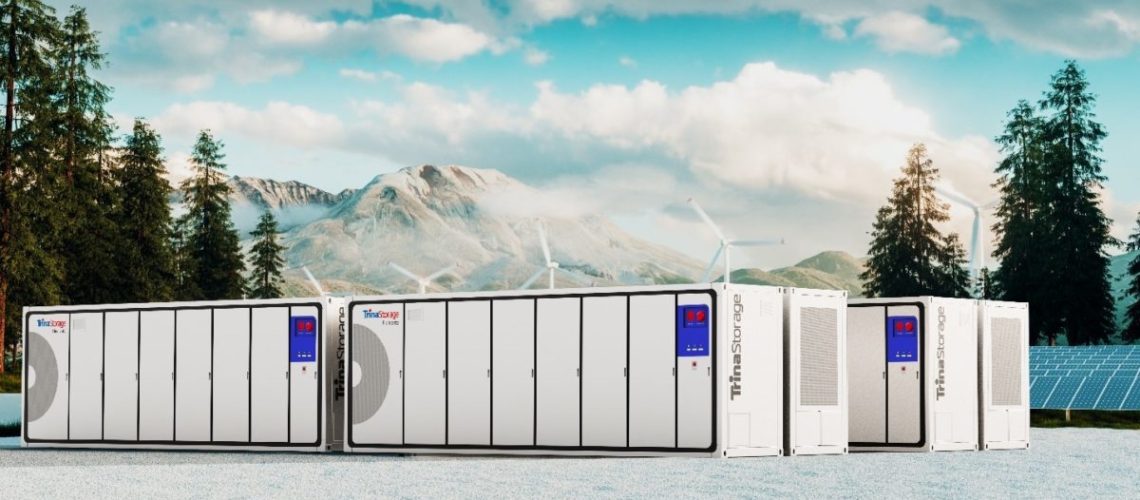Trina Storage’s new 2.1 MWh DC All-New Elementa solution is a modular LFP battery cabinet with a plug-in concept to connect multiple units. The company is ramping up battery manufacturing capacity to strengthen vertical integration, given supply chain risks throughout the world.
From pv magazine global
Trina Solar’s energy storage unit officially launched the Trina Storage Elementa grid-scale energy storage system at the Smarter E event in Munich last week, featuring its proprietary lithium iron phosphate (LFP) battery cells.
The 2.1 MWh DC All-New Elementa is a modular LFP battery cabinet with a plug-in concept to connect multiple units. The standardized design and factory-installed configuration purportedly reduces installation times by up to 70%. The system is designed to make on-site installation simpler, cutting capex by up to 8%, said the manufacturer.
Elementa has fully integrated battery management systems and thermal runaway and safety features such as a bi-directional liquid cooling system, gas sensors, and heat and smoke detectors. On the back of improved LFP battery cell performance, Elementa is able to provide up to 10,000 cycles, which according to Trina, is 25% more than the Tier 1 market average.
Furthermore, the manufacturer claims that its grid-scale storage solution cuts the total cost of ownership by 25% per MWh compared to Tier-1 market average. While massive in size, the system can fit into a shipping container.
Elementa was first unveiled in October last year as part of Trina Storage’s debut at Intersolar Europe. Trina Solar’s storage division was founded in February last year. In the meantime, the business has already supplied its first project, 50 MW/56.2 MWh fully integrated battery storage system in Burwell, England, for energy infrastructure provider SMS plc to provide balancing services to the UK National Grid. The system was commissioned in February.
Unlike some other major PV manufacturers that have decided to step into the battery storage arena, Trina is producing all battery components from the bottom up. “We control the supply chain ourselves,” Ken Rush, Trina Storage’s head of product and engineering, told pv magazine.
Nonetheless, demand is ramping up so fast that Trina Storage is struggling to keep up. The business already has more than 100 customers throughout the world. As Rush told pv magazine, Trina Storage is sold out for the year and continues to scale up production as we speak.
Current order waiting times are around six to seven months and a “large portion” of Trina’s 3 GWh LFP capacity in China’s Jiangsu province, is in production and will be scaled up in the near future. The business has also set up an integration base that enables a customizable battery energy storage system design with an annual capacity of 5 GWh.



